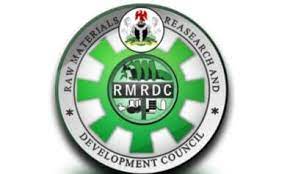A study states that one of the areas requiring indigenous technology upgrading in Nigeria is in the development of the shea nut value chain. The shea nut tree is a major agricultural resource that has been contributing to poverty alleviation in the country. To this end, the Raw Materials Research and Development Council (RMRDC) is working towards achieving same. BINTA SHAMA reports.
Indigenous technology is the technology applied by native inhabitants for the purpose of developing or processing natural resources. Most countries have a pool of indigenous technologies. However in today’s globalized world, economic activities have shifted largely from domestic affairs to more complex international relationships which have deepened competition in the global markets.
Market value of shea at $310m
As a result of the changing world economic order which has necessitated production and processing of natural resources should be done to meet international standards in order to stimulate industrial development and to propel nations towards attainment of technological self-reliance. Indigenous technological upgrading, has therefore become essential to industrialization, most especially in sectors such as agriculture, preventive medicine, community development and poverty alleviation.
Uses of shea
One of the areas requiring indigenous technology upgrading in Nigeria is the development of the shea nut value chain. The shea nut tree is a major agricultural resource that has been contributing to poverty alleviation in the country. The major problem limiting the growth of the enterprise is that more than 98% of the processors are indigenous people using indigenous technology to process the nut to butter coupled with underdevelopment of the shea tree. This limits the competitiveness of the product in both the local and international markets. As a result, the value chain has remained grossly underdeveloped. This necessitated the need for spirited efforts to be made to upgrade the indigenous technology of shea butter production and to improve on the productivity of the shea butter tree.
The shea tree grows naturally in about 21 of the 36 states in Nigeria. The kernels contain about 42 to 48% oil which has tremendous skin care, healing, and medicinal properties which makes its demand in various industries very high. The butteris ideal for use as raw materials in the food, pharmaceutical and cosmetic industries. It is used as cooking oil, in baking and in production of chocolate, margarine, cosmetics, soap, detergents, paints, lubricants, paints and candles due to the presence of solid fat (stearin) and liquid oil (olein). Due to the low fat content, it is popularly being used as a substitute for cocoa and palm oil. Its use as cocoa butter substitute is derived from its melting point which is between 32 – 45°C and high amounts of distearin (30%) and stearo-palmitine (6.5%) which makes it blend with cocoa butter without altering the flow properties.
Commercial shea butter
Commercial shea butter is available in the market on the basis of its purity and level of processing as grades Grade A, B, C, D and E with Grade A-Raw retaining its most natural properties as compared to other grades, hence its demand from food and cosmetics segments is higher.
According to the year 2023 report of the Custom Market Insights, the Global Shea Butter Marketwas estimated at USD 2.5 billion in 2021 and rose to USD 2.8 billion in 2022. It is anticipated to rise to USD 5.2 billion by 2030, at a CAGR of roughly 8% between 2022 and 2030.
The cosmetic and soap industry in the U.S. is a lucrative global market for shea butter extracts. In Japan, shea butter is highly sought after due to its high skin care, emollient and moisturizing properties. This demand also comes from cocoa butter equivalent (CBE) as shea butter is approved to be used in chocolates. Likewise the demand for the product in the food as well as natural cosmetics market in Asia is increasing.
Likewise the demand in West Africa has also increased by over 1,200% over the last 10 years. In 2019, an estimated 650,000 tons of kernels were exported from Africa, with a market value of approximately US$310 million.
Nigeria: Largest shea belt in the world
Nigeria has the largest Shea belt in the world, and it is recognized as the world’s leading producer of shea nut with a global production of about 45%. The documented annual production is between 330,000mt – 350,000mt while the potential production is estimated at 800,000mt as at 2019.
However, out of the 800,000mt of Shea nuts produced in Nigeria, only 20,000mt is processed into butter while the rest are exported to neighboring West African countries. This is due to the inability of Shea butter produced in Nigeria to meet international standards.
Presently, approximately, 16 million rural women in Africa obtain their livelihoods by collecting, processing, and selling shea kernels and butter for local consumption or export. These activities contribute on average of 15% or more to their household income.
In Nigeria rural women process the nuts into butter using traditional indigenous methods. The traditional indigenous method involves a series of operations. However, some of these are detrimental to products quality. For instance, storage of the fruit for three days before processing negatively affects the quality and quantity of the resulting butter because of the sugar rich pulp which assists fungal growth and thereby reduces oil content of the kernel. Likewise drying shea nuts by sunlight for about 3 to 10 days leads to mold infestation most especially, during rainy season.
Shea butter yield and quality
Both parboiling duration and drying methods significantly affect shea butter yield and quality and the free fatty acids levels. During the drying period, the kernels become detached from the shell wall. De-shelling is carried out using stone, hammers and pestles. Winnowing is carried out by holding basket filled with a mixture of the shells and kernel at arm’s length and allowing a gradual pour–out.
After this the remains of the shell pieces from the shea kernels are removed in a process generally referred to as sorting. At this stage, shea kernels that are broken, infected by mould or are black in colour are also removed to obtain clean unbroken shea kernels. The shea kernels can now be stored for several months without deterioration or processed into shea butter.
The pre–treatment and storage of the shea kernels before the butter extraction process is a critical stage that affect the quality of shea butter produced. The first adverse effects are seen in the decrease in oil phenols and in the reduction of volatile compounds responsible for the various properties of shea butter. In addition long–term storage of seeds under high relative humidity leads to mold infestation which increases the free acidity due to the production of lipase.
Crushed shea nut pieces are roasted using cylindrical container made of mild steel with handle on open fire. This results in the slight smoky smell of traditional shea butter originates. Most of the existing equipment for processing of shea butter especially the roasters are made of mild steel materials which can easily become rusted and cause contamination of the product.
Metal particles form as a result of the rusting settlement at the bottom of the equipment, thus causing contamination of the product. Likewise, smoke from open fire often result in contamination of the Polycyclic Aromatic Hydrocarbon (PAHS) which are carcinogenic.
In addition, open fire roasting has the disadvantage of producing burnt crushed kernels which results in black shea oil formation and loss of vital and essential nutrients.
After the roasting, the roasted shea kernels are allowed to cool down for at least 30min or at most 1 hour, before being milled into a fine paste. The mixing or oil extraction stage involves mixing the paste with water while mixing the paste with a palm of the hand, adding small quantities of water and gathering of the floating fat.
The manual method of mixing used by women in Nigeria is very laborious. Most often the container holding the paste is placed on the ground; women stand over the bucket and bend at the waist.
RMRDC intervention
To address these shortcomings, the Raw Materials Research and Development Council (RMRDC) initiated projects to overhaul the shea nut value chain in Nigeria. Among these are upgrading the indigenous technology used in shea butter production and productivity improvement of the shea nut trees locally.
The Council has developed and fabricated the equipment for shea nut processing. This has been installed in Agbaku-eji, Kwara State for Araromi Women Cooperative Society and Amanawa Shea Butter Women Cooperative Society, Kebbi state.
The plant has a crushing capacity of 0.5 tons/hour and kneading capacity of 100Kg/hour. The technology has been adopted by private sector operators in the neighboring villages.
The Council has conducted laboratory analysis of the Shea butter samples to classify the butter either as grade A, B, C or D in accordance with international grading of shea butter for different uses.




